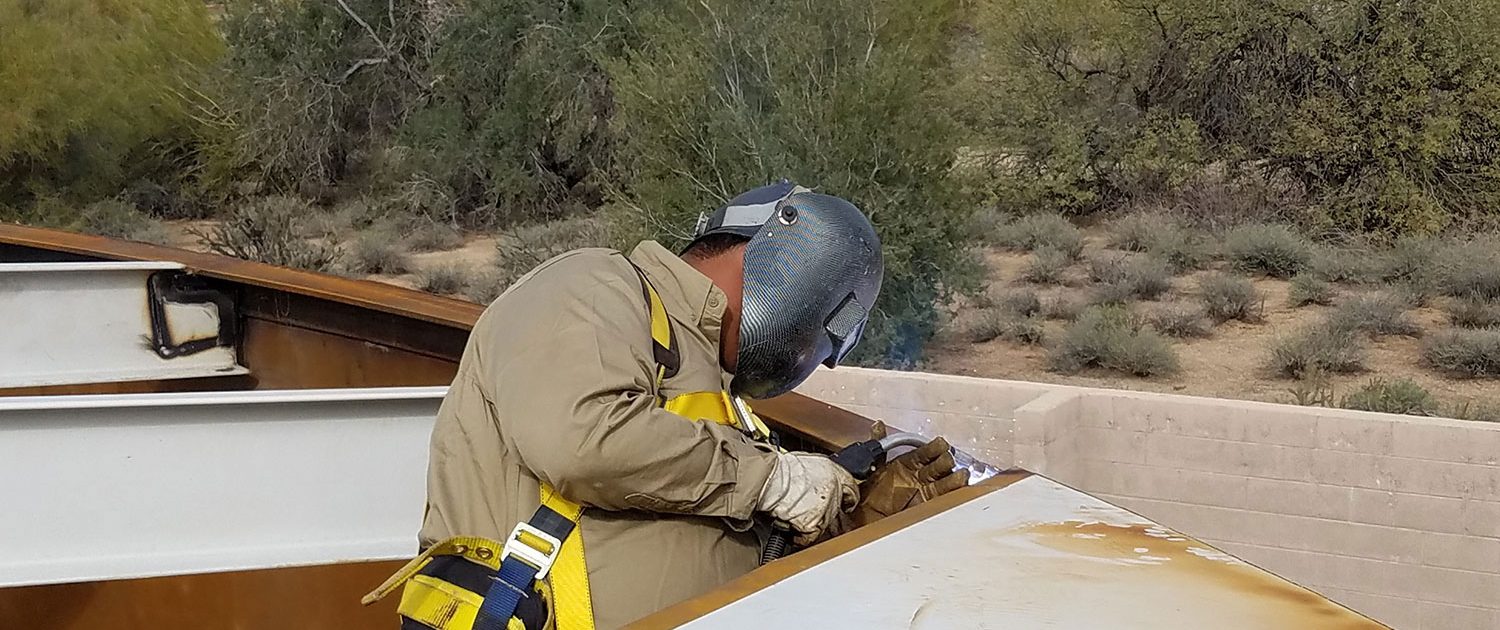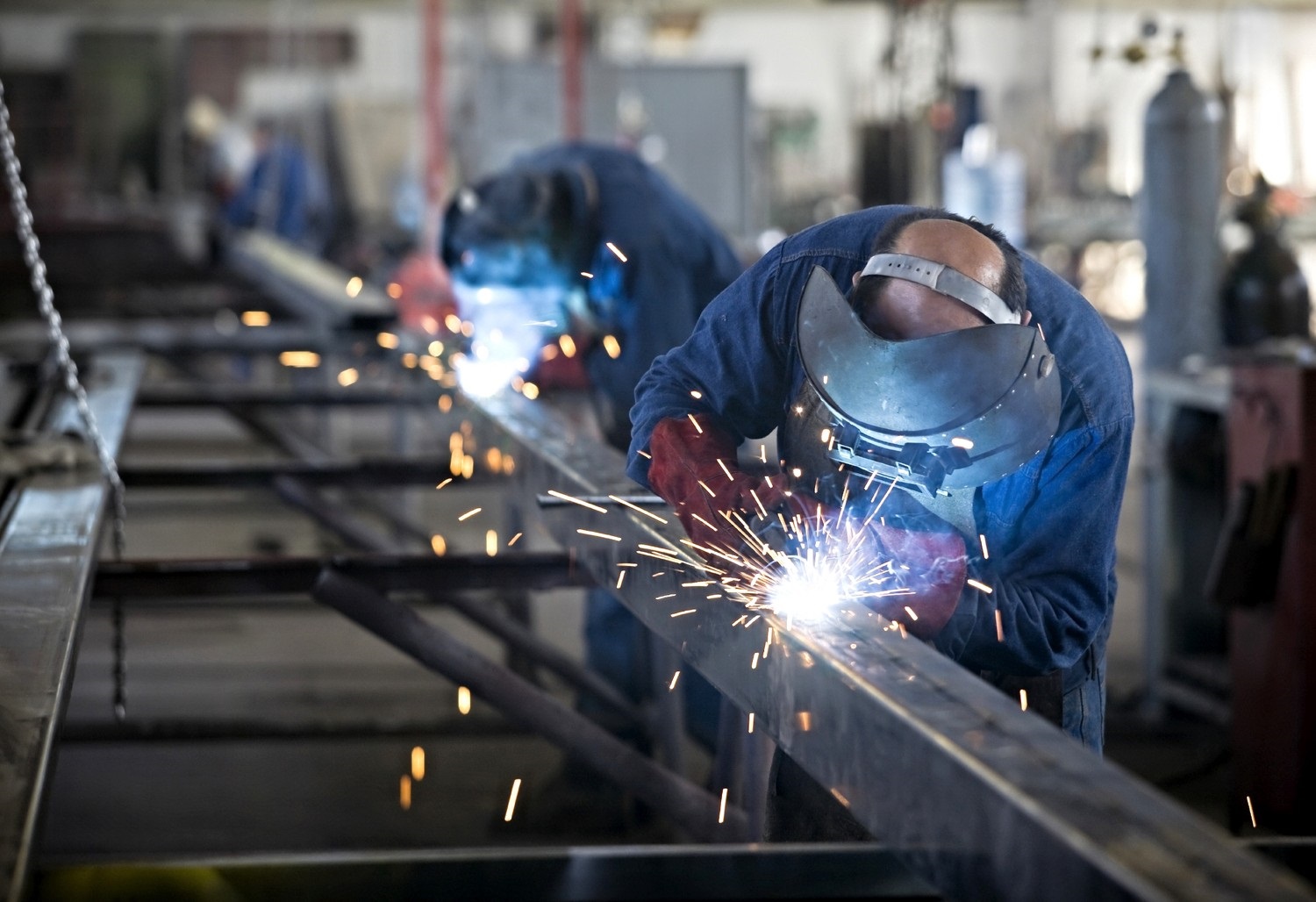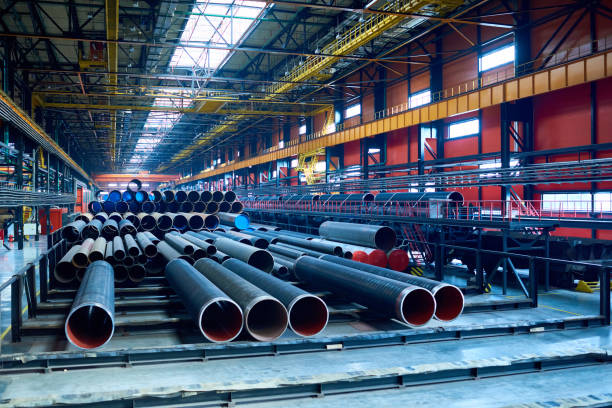Metal Fabrication Melbourne: Accuracy Engineering for All Requirements
Metal Fabrication Melbourne: Accuracy Engineering for All Requirements
Blog Article
Cutting-edge Fads in Steel Manufacture: Enhancing Sturdiness and Precision
In the world of steel fabrication, the search of sturdiness and precision has led to a wave of ingenious trends that are reshaping the market. From improvements in welding innovations to the assimilation of robotic automation in construction procedures, the landscape of steel manufacturing is evolving rapidly. High-strength alloy advancement, paired with the application of 3D modeling and simulation software application, is pushing the boundaries of what is attainable in regards to structural integrity and accuracy. The expanding focus on sustainable methods in steel manufacturing is not just driving performance yet additionally fostering a much more ecologically mindful technique to construction. These fads are not just forming the here and now yet additionally preparing for the future of steel construction, guaranteeing additional enhancements in longevity and accuracy.
Advanced Welding Technologies
In the realm of steel construction, the fostering of innovative welding technologies has substantially reinvented the market's strategy to attaining premium high quality and precision in architectural welds. Advanced welding innovations, such as laser beam of light welding and friction mix welding, have arised as game-changers in the field. Laser beam of light welding utilizes a concentrated laser beam of light to join steel parts with impressive accuracy and rate, making it optimal for slim materials and detailed designs. On the other hand, rubbing mix welding produces extremely solid bonds by mechanically intermixing the molecules of the materials at the joint, getting rid of the demand for melting the steel. These technologies supply various advantages, including minimized heat-affected areas, minimal distortion, and boosted mechanical properties in the welded joints. By leveraging these innovative welding techniques, steel makers can raise the durability, stamina, and precision of their structural welds, satisfying the significantly requiring needs of modern building projects.
Robot Automation in Manufacture
Accepting robotic automation has actually become a cornerstone of modern-day steel fabrication practices, improving and streamlining procedures performance throughout the market. Robots are revolutionizing the way steel parts are made, providing unequaled accuracy and rate while reducing human mistake. These automated systems can take care of repeated jobs with regular accuracy, bring about better end items.
One key advantage of robotic automation in steel manufacture is the ability to work around the clock without tiredness, significantly raising production result. This continuous procedure lessens downtime and accelerates job timelines, eventually saving expenses for makers. Furthermore, robots can be programmed to carry out intricate jobs that may be unsafe or difficult for human employees, boosting safety in the work environment.
In addition, robot automation allows seamless integration with various other electronic modern technologies, such as computer-aided design (CAD) software and Net of Points (IoT) systems (steel fabricators melbourne). This interconnected method enhances interaction in between different stages of fabrication, optimizing process and making sure real-time tracking and control. As the steel fabrication market remains to advance, robot automation sticks out as a transformative force driving effectiveness and precision in producing processes

High-Strength Alloy Development
The improvement of high-strength alloy development in steel construction is reshaping the industry's method to enhancing product toughness and efficiency. High-strength alloys are engineered to show exceptional mechanical homes, such as increased tensile toughness, toughness, and deterioration resistance contrasted to conventional steel qualities. By including these innovative alloys into manufacture procedures, manufacturers can generate elements that hold up against greater anxiety levels and extreme atmospheres, causing even more reliable and long lasting final product.
One trick advantage of high-strength alloy growth is the capability to minimize product density without endangering architectural stability. This not only leads to lighter-weight elements however additionally adds to cost savings and enhanced efficiency in manufacture and assembly procedures. In addition, the improved strength-to-weight proportion of these alloys permits the design and building and construction of structures with higher load-bearing capacities while lessening general weight.
3D Modeling and Simulation Software Program
Developments in steel manufacture processes have actually been considerably thrust by the assimilation of cutting-edge 3D modeling and simulation software devices. These devices allow makers to develop thorough virtual steel fixing versions of their projects, allowing them to imagine the end product with precision prior to any kind of physical job starts. By imitating various anxiety variables, ecological conditions, and structural lots, producers can enhance styles for improved durability and performance. In addition, 3D modeling and simulation software application improve the production procedure by determining prospective concerns at an early stage, reducing the demand for costly rework and decreasing material waste.

Sustainable Practices in Steel Manufacturing
Including lasting practices right into steel manufacturing procedures is essential for reducing ecological impact and making sure long-term resource availability. One vital sustainable method is the adoption of energy-efficient innovations to lower greenhouse gas exhausts during the steel production process. This includes utilizing renewable resource sources, such as solar or wind power, to power steel plants and applying energy-efficient equipment to enhance energy use.
Another critical aspect of lasting steel manufacturing is the liable sourcing of resources. This includes guaranteeing that the iron ore and various other sources made use of in steelmaking are acquired from environmentally pleasant and honest resources. By promoting openness in the supply chain and sticking to stringent ecological criteria, steel makers can lessen the negative effects of resource extraction on regional ecological communities and communities.

Conclusion
In conclusion, the ingenious fads in steel manufacture such as sophisticated welding innovations, robot automation, high-strength alloy development, 3D modeling and simulation software, and lasting practices are improving the durability and precision of steel items. These developments are transforming the steel manufacture sector by enhancing sustainability, top quality, and effectiveness. It is clear that the future of steel manufacture depends on welcoming these cutting-edge modern technologies to fulfill the demands of modern-day building and construction and production markets.
In the world of steel manufacture, the quest of resilience and precision has led to a wave of innovative fads that are reshaping the sector.In the world of steel manufacture, the fostering of innovative welding technologies has actually substantially changed the sector's approach to achieving exceptional high quality and accuracy in structural welds. As the steel construction industry continues to progress, robot automation stands out as a transformative pressure driving efficiency and accuracy in manufacturing processes.
Additionally, reusing and reusing steel scrap and waste products play a considerable duty in improving the sustainability of steel production. Alpha reo.In final thought, the innovative patterns in steel construction such as sophisticated welding modern technologies, robotic automation, high-strength alloy growth, 3D modeling and simulation software application, and sustainable methods are improving the durability and accuracy of steel products
Report this page